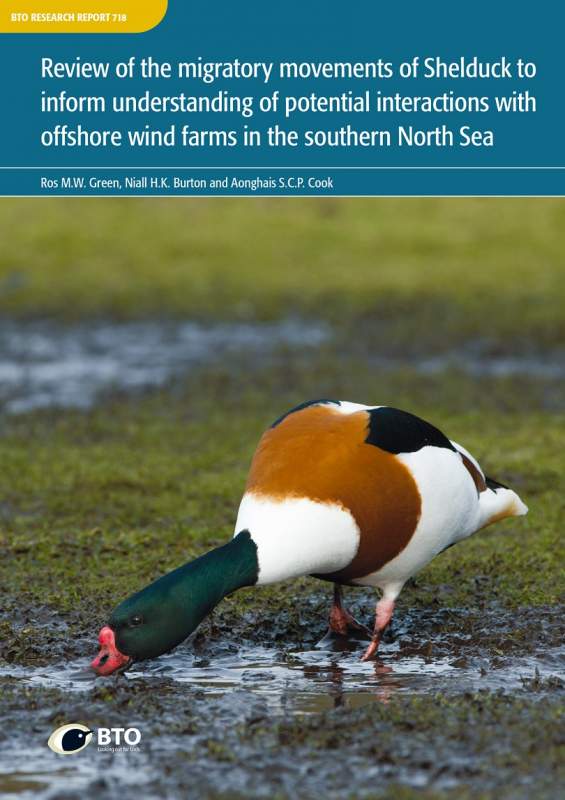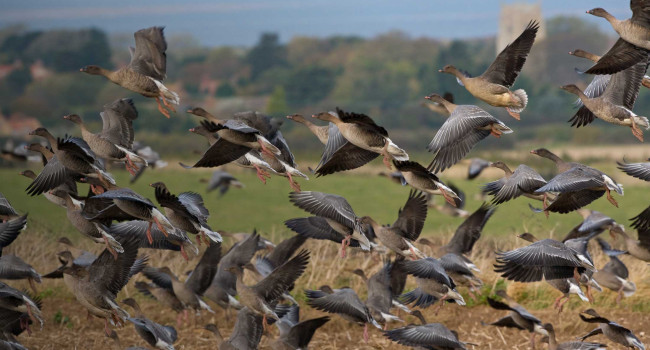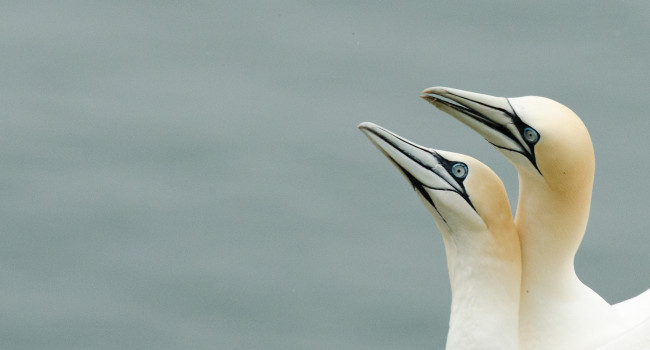Review of the migratory movements of Shelduck to inform understanding of potential interactions with the offshore wind farms in the southern North Sea
Author(s): Green, R.M.W., Burton, N.H.K. & Cook, A.S.C.P.
Published: November 2019 Issue No.: 718 Pages: 48pp
ISBN: 978-1-912642-10-6
Download article 3.1 MB application/pdf
Abstract
1. Offshore wind farms (OWFs) may have a number of negative effects on waterbird populations. To inform the consenting process, the potential impacts of these key effects are assessed. A significant proportion of the north-west European population of Shelduck Tadorna tadorna migrate across the southern North Sea annually, and so may be exposed to these OWF effects.
2. The aim of this project was to provide an overview of the current knowledge of the migratory movements of UK populations of breeding and non-breeding Shelduck by conducting a literature review and analysing all Shelduck ring-recovery data from the British and Irish Ringing Scheme. Key knowledge gaps would then be identified, and recommendations for further work to fill these gaps would be made.
3. A literature review was conducted to find all sources of information on Shelduck distributions and movements within the north-west European population, with a focus on their migratory routes and timings, as well as their flight heights. The ring-recovery data were analysed in order to determine whether these could provide any further detail.
4. The results of the literature review found reasonable information on Shelduck distribution and the timings of their annual cycle. The majority of UK Shelduck migrate across the North Sea twice annually, travelling to and from a major moulting site in the Helgoland Bight. They generally leave Britain between late-June and early-August, and return any time between October and February. Those leaving pre-migration accumulation areas on the British west coast do so in large flocks on clear evenings with a favourable tail wind, usually around sunset, with the migration east happening overnight. In contrast, there is no clear information on when, where, or in what conditions Shelduck leaving the UK east coast migrate. Little is known about which individuals from the UK breeding range migrate to the Helgoland Bight, with some birds from the same breeding area remaining in the UK to moult, whilst others cross the North Sea to moult on the continent. It is also not currently possible to link individuals between their breeding, moulting and non-breeding areas, which makes it difficult to determine which individuals using the 32 designated SPAs that include Shelduck as a non-breeding feature are likely to interact with OWFs. No information on the specific migratory pathways was available from the literature review, and only one reference presented empirical data on Shelduck flight heights.
5. The results of the ring-recovery analysis broadly agreed with the information found during the literature review, confirming the north-west European distribution and the timings of movements within the annual cycle. It did not provide any extra information on the migratory
pathways, speed of migration or flight heights.
6. Although the timings and final destinations of the Shelduck moult migration are relatively well documented, most primary literature is from the 1940s-1980s, with more contemporary literature suggesting the pattern may have changed in recent years. There is a need to update
the knowledge on migratory routes and destinations in order to accurately assess potential OWF effects on the Shelduck population.
7. The biggest knowledge gaps are the lack of data on specific migratory routes across the North Sea, flight heights and what Shelducks’ behavioural responses to offshore structures are. It is recommended that a tracking study is implemented to collect data to fill these knowledge gaps. The feasibility of a tracking study is discussed. Other knowledge gaps and recommendations are also outlined.









Share this page